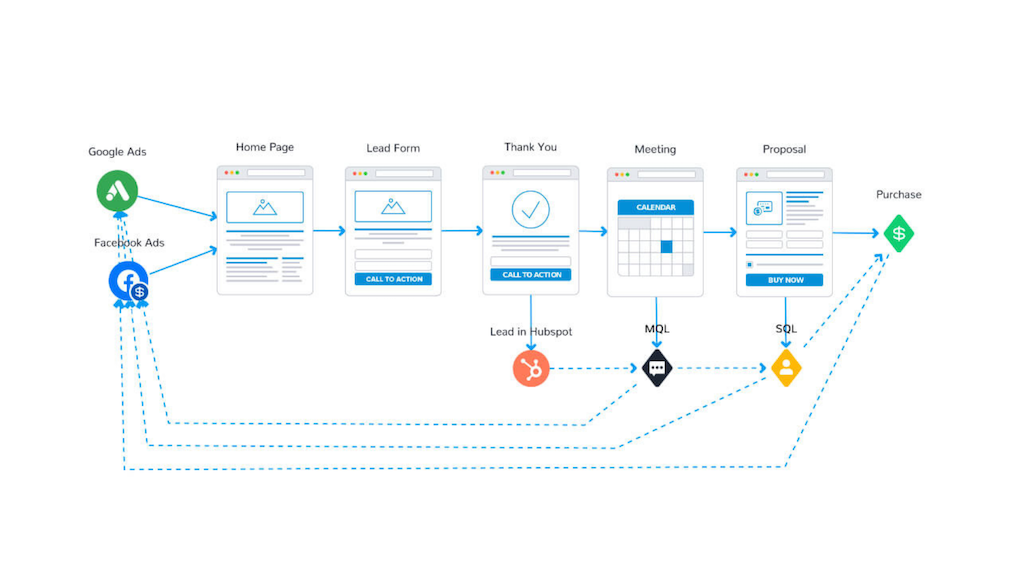As the marketing landscape evolves, new techniques emerge, new channels open up, and the competition for consumers’ attention only gets fiercer. Your paid advertising initiatives need to adapt to the challenges of a changing market. The most important tool to have on hand is a willingness to iterate on your media planning strategy.
When challenges do arise, reviewing your media plan and the tactics you’ve previously implemented will provide clarity and guide your efforts as you explore all the ways that you might best reach your target audience.
Here are a few ways you can address some of the major challenges media planners face as they execute and improve on their strategies.
1. Reassess your market research and segmentation
You likely started your media planning process with some thorough market research to determine who your ideal customer is and what they want to see from your brand. However, your initial market research is only a hypothesis. Sometimes, media planners discover that they’re not reaching the right audience, or they’ve targeted too general an audience.
Effective segmentation is critical for optimizing the performance of your campaigns. By slicing your audience into more specific groups, you’ll be able to see clearly who is responding to your current messaging and who isn’t. This enables you to either adjust your messaging or put more of your effort into targeting those more responsive segments.
2. Rescue diminishing ROAS and protect your scope of work

Having a budget and setting out specific, measurable goals provides guardrails you can use to define the scope of your initiatives. Your budget should include room to test and experiment with audiences, channels, messaging, and creative. Consistently measuring the success of each experiment against your budget helps you determine which strategies are delivering ROI and return on ad spend (ROAS).
You know that you want to increase leads, conversions, and revenue, but your media plan has to cover the tactical details that result in these outcomes. Creating campaign-specific goals based on your budget (like achieving a thousand downloads of a lead magnet or selling out an event in the first two weeks) provides a solid foundation for effective experimentation.
Return to your goals and your budget throughout your campaign to make sure that you’re focusing on solving the highest-priority problems that will have the biggest impact on ROAS. If your ROAS begins to plateau, you can then take a look at the variables you’re testing (e.g. is YouTube performing better than Pinterest for audience A?) and expand the scope of work based on what you need to change to meet the goals you set out at the beginning.
It’s important not to move the goal posts as you move through your campaign. Agreeing on and communicating specific goals to your team and leadership helps you avoid scope creep in your media planning and buying processes. Rather than expanding or changing your initial goals, keeping your initiatives lean and contained also allows you to iterate and test new strategies faster.
3. Maximize your internal processes
Your campaign’s ROI isn’t just tied to how successful your ads are, it’s also impacted by how effectively you and your team can execute your strategy. Inefficient processes are frustrating and hurt your bottom line.
Review your processes. Reassess whether you have the right workflows in place and that you’re maximizing your chosen technology tools. Resources like HubSpot’s Paid Media Template or Asana's media planning templates that integrate with your project management software can get you back to basics when you’re looking to maximize your team’s time and effort.

Media planning software centralizes your media planning and buying efforts and connects the data from all your channels so you can get a clear idea of what’s working. The right software makes content publication easier and provides audience insights, so you spend less time organizing these aspects of your media plan.
If you weigh out the time you’ll spend developing new internal processes against your objective and find that your team doesn’t have the bandwidth to create or execute your media plan, you can also outsource the process to an agency that has specialists to handle niche tasks like programmatic ad buying or negotiating sponsorships. Major Tom can support your goals with strategy and streamline your media planning process with media planning services, social media strategy, and content marketing.
4. Optimize your channels and content for each funnel stage
If you’ve already done the work of segmenting your top-of-funnel audience, it’s a good idea to take a look at the segments within each stage of your marketing funnel.
Different channels and tactics apply to different stages of your funnel, as does content. For example, a LinkedIn ad offering an ebook with a lead generation form could be great for nurturing current leads who already know about your products or services but want to experience value from your brand before purchasing.
You might want to return to create some customer journey-specific goals like:
-
Building awareness by driving engagement with top-of-funnel content.
-
Educating leads on the benefits of your product with resources like webinars or demo videos.
-
Converting a percentage of your existing leads into paying customers.
Based on your market research and buyer persona development, you’ll have an idea of which channels are the best place to reach your customers. You’ll also know what content and messaging are likely to hook them in. Consulting your campaign and customer data will help you understand what those top-of-funnel leads might want next from your brand as you nurture them towards a sale.
5. Track your success and take full advantage of your data
Visibility into performance is key to figuring out what’s working, so you don’t waste time and money on strategies that aren’t hitting the mark. However, if you find you’re trying to hit a moving target as you iterate on your process and campaign tactics, you might need to create a clearer picture of what success looks like with hard numbers and defined outcomes.
Go back to your goals and ensure that there are metrics and key performance indicators (KPIs) attached to each of them. For example, if your goal is to optimize your content creation and iteration process across your team with better project management workflows, you’ll want to track how quickly your initiative is moving from ideation to creation to publication through your team in terms of days or weeks.
Run A/B tests to determine whether messaging and content are reaching the right audience and having the desired effect. Leverage the incoming data to determine which channels are performing the best and iterate on your ad formats and messaging as you go.
Evaluate the success of your media planning process against your overarching goals of increasing leads, boosting conversions, and driving revenue. With media planning software, you can stay on top of the KPIs that you’ve attached to the ad campaigns themselves. Features like offline conversion tracking help you see even deeper into the results of your campaigns. 
Offline Conversion Tracking Process
Your paid advertising campaigns are also a rich source of customer data, an invaluable resource for improving your ads going forward. In 2020, 32% of marketers reported that market research and competitive insights are the most important factors supporting their marketing strategy while an additional 32% report marketing analytics as their second most important supporting factor. Learning from past campaigns is the best way to get ahead in the future.
Keep iterating on your media planning process
A successful media plan facilitates impactful business outcomes and keeps you and your team on track. Revisiting your media plan can help you streamline interaction between all the moving parts of a paid advertising strategy as they interact with other aspects of your marketing. It also ensures that everyone involved in executing the plan is on the same page throughout the process, boosting efficiency.
Use these tips to enhance your own media planning process. Learn about how Major Tom can help you drive more ROAS from your next media buying initiative.